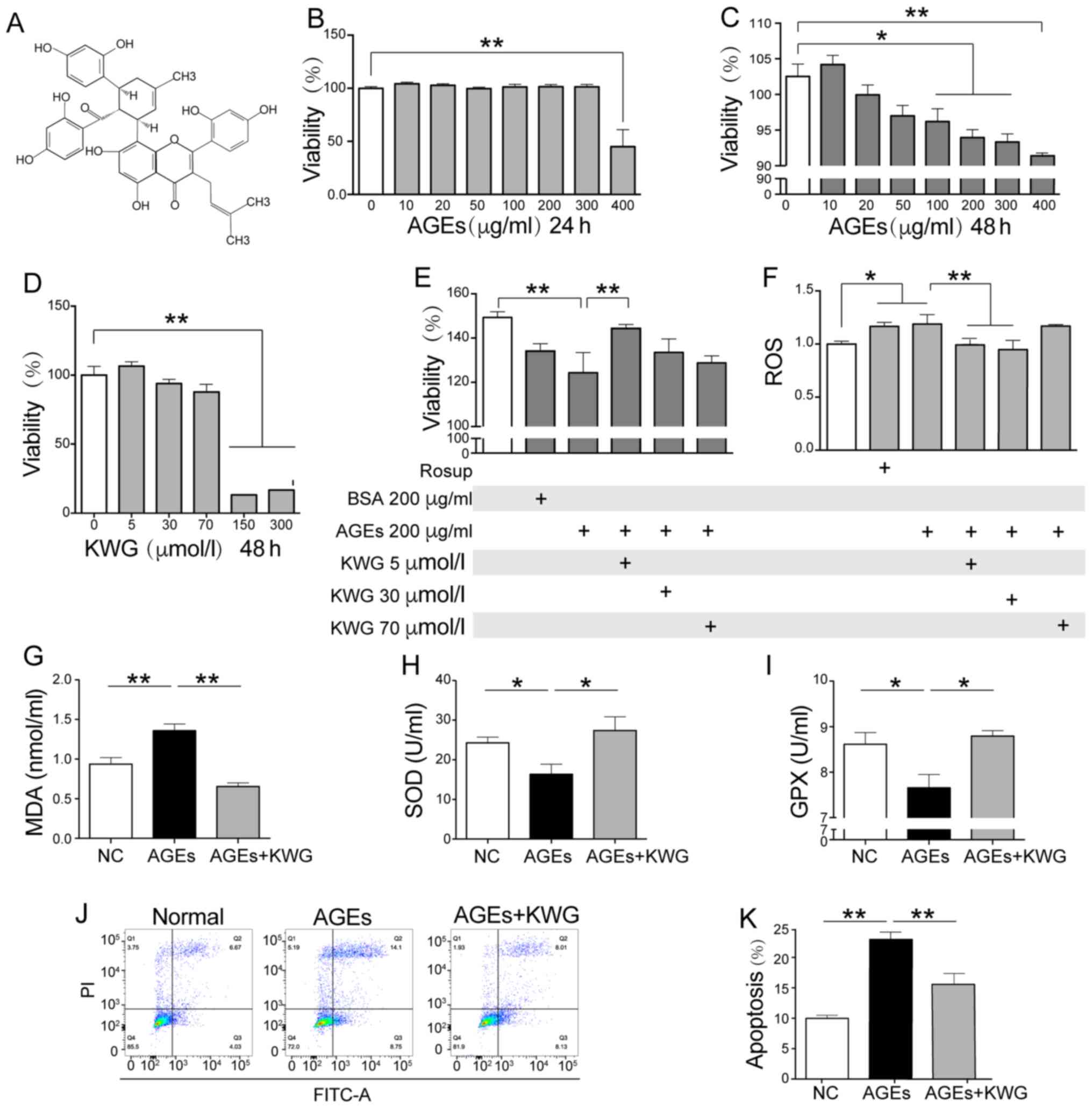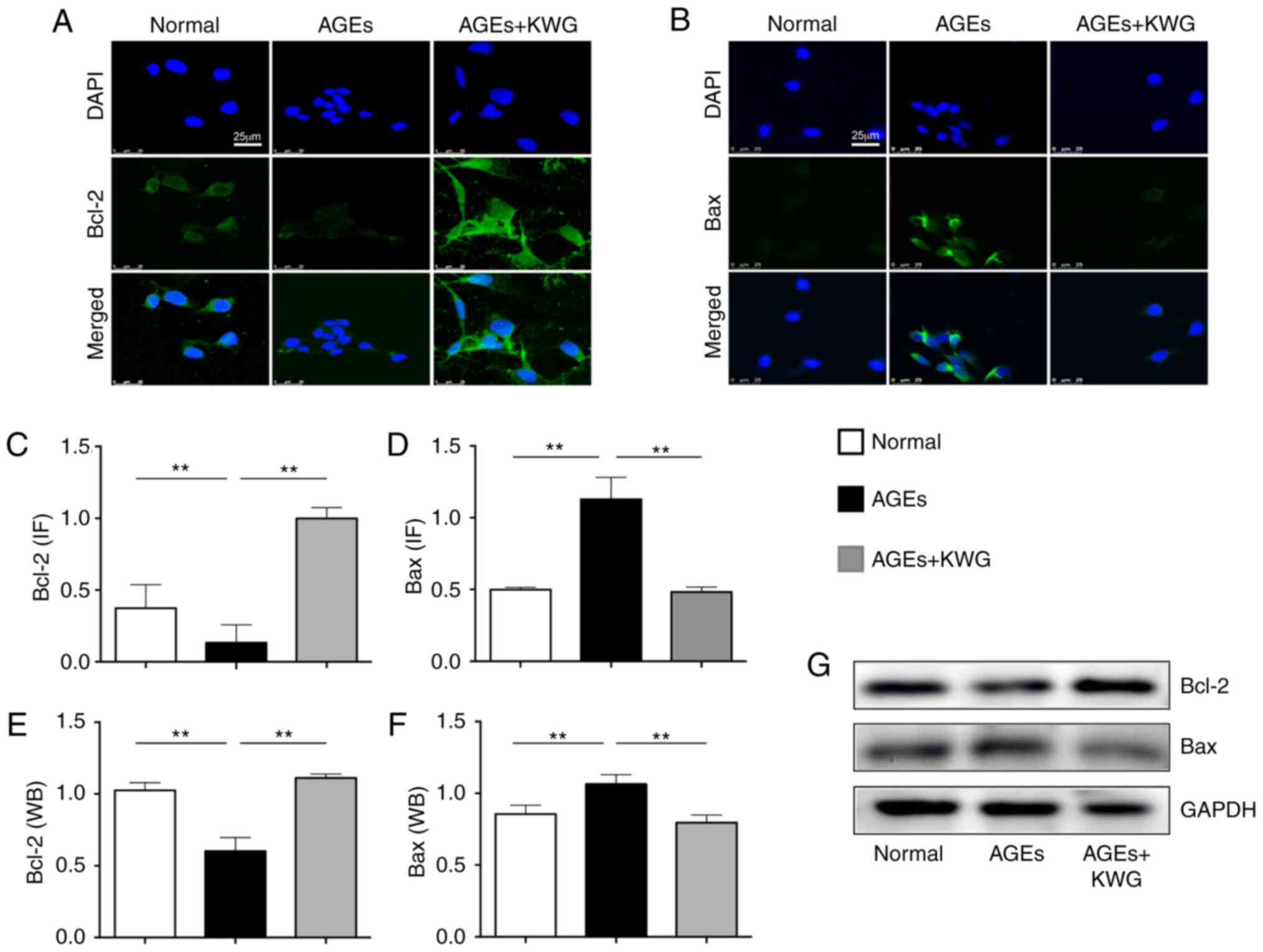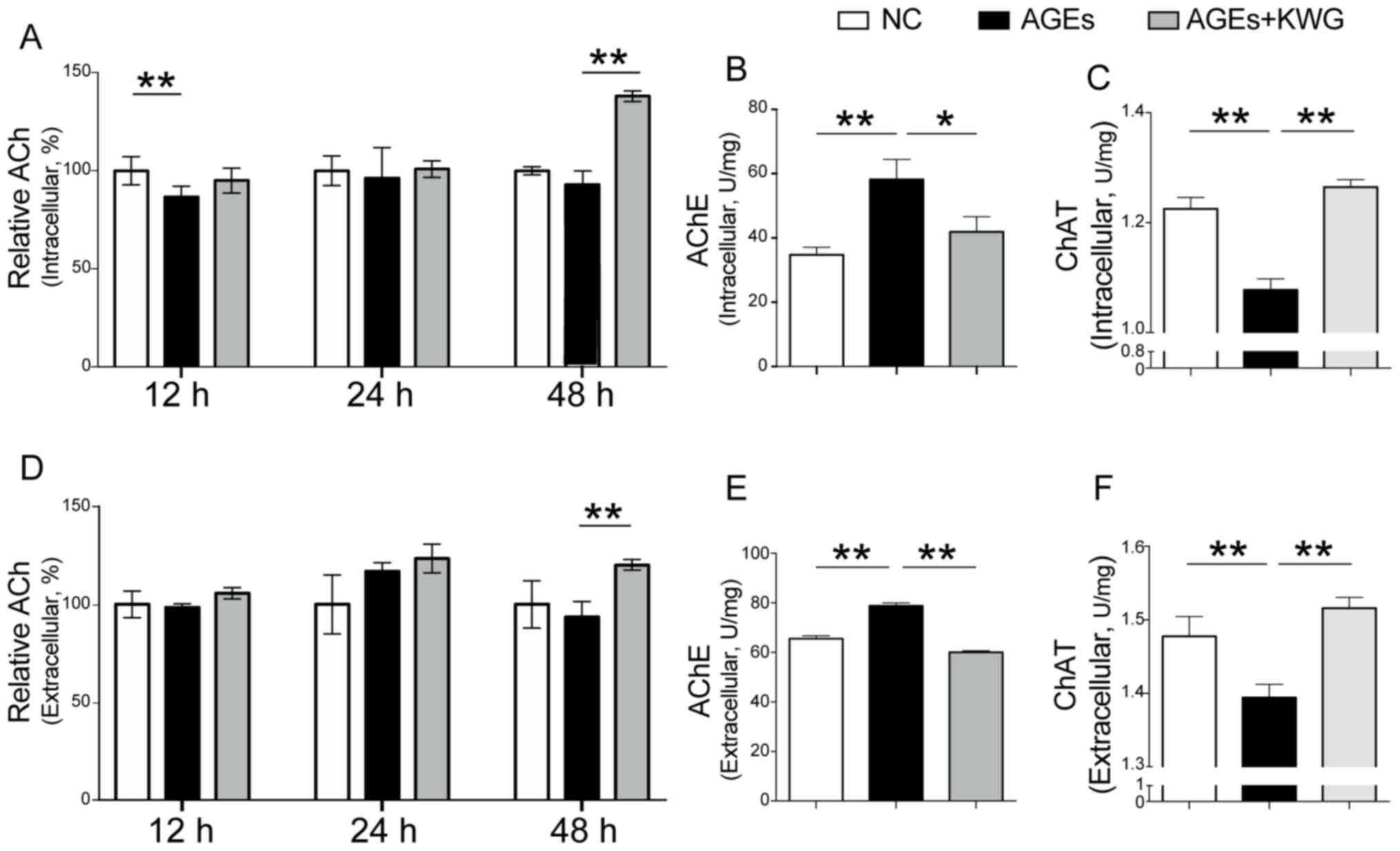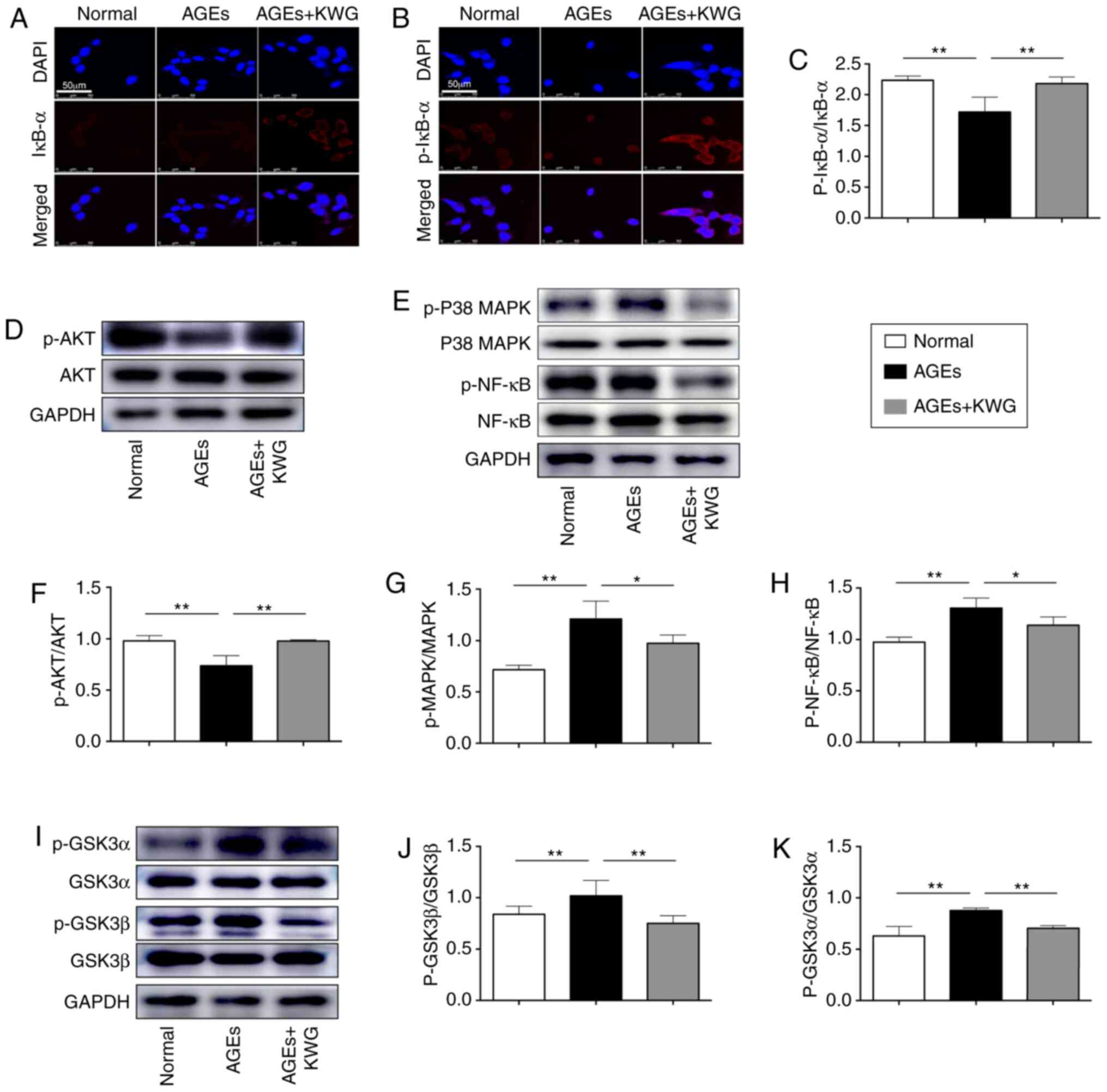|
1
|
Markowicz-Piasecka M, Sikora J, Szydłowska
A, Skupień A, Mikiciuk-Olasik E and Huttunen KM: Metformin - a
future therapy for neurodegenerative diseases: Theme: Drug
Discovery, Development and Delivery in Alzheimer's Disease Guest
Editor: Davide Brambilla. Pharm Res. 34:2614–2627. 2017.PubMed/NCBI View Article : Google Scholar
|
|
2
|
Gireesh G, Kumar TP, Mathew J and Paulose
C: Enhanced muscarinic M1 receptor gene expression in the corpus
striatum of streptozotocin-induced diabetic rats. J Biomed Sci.
16(38)2009.PubMed/NCBI View Article : Google Scholar
|
|
3
|
Saliu JA, Oboh G, Omojokun OS, Rocha JBT,
Schetinger MR, Guterries J, Stefanello N, Carvalho F, Schmatz R,
Morsch VM, et al: Effect of dietary supplementation of Padauk
(Pterocarpus soyauxii) leaf on high fat diet/streptozotocin
induced diabetes in rats’ brain and platelets. Biomed Pharmacother.
84:1194–1201. 2016.PubMed/NCBI View Article : Google Scholar
|
|
4
|
Zhao J, Liu L, Li X, Zhang L, Lv J, Guo X,
Chen H and Zhao T: Neuroprotective effects of an Nrf2 agonist on
high glucose-induced damage in HT22 cells. Biol Res.
52(53)2019.PubMed/NCBI View Article : Google Scholar
|
|
5
|
Waslo C, Bourdette D, Gray N, Wright K and
Spain R: Lipoic acid and other antioxidants as therapies for
multiple sclerosis. Curr Treat Options Neurol.
21(26)2019.PubMed/NCBI View Article : Google Scholar
|
|
6
|
Eckert GP, Eckert SH, Eckmann J, Hagl S,
Muller WE and Friedland K: Olesoxime improves cerebral
mitochondrial dysfunction and enhances Aβ levels in preclinical
models of Alzheimer's disease. Exp Neurol.
329(113286)2020.PubMed/NCBI View Article : Google Scholar
|
|
7
|
Balamurugan M, Santharaman P, Madasamy T,
Rajesh S, Sethy NK, Bhargava K, Kotamraju S and Karunakaran C:
Recent trends in electrochemical biosensors of superoxide
dismutases. Biosens Bioelectron. 116:89–99. 2018.PubMed/NCBI View Article : Google Scholar
|
|
8
|
Jiao Y, Wang Y, Guo S and Wang G:
Glutathione peroxidases as oncotargets. Oncotarget. 8:80093–80102.
2017.PubMed/NCBI View Article : Google Scholar
|
|
9
|
Paudel P, Yu T, Seong SH, Kuk EB, Jung HA
and Choi JS: Protein tyrosine phosphatase 1B inhibition and glucose
uptake potentials of mulberrofuran G, Albanol B, and Kuwanon G from
root bark of Morus alba L. in insulin-resistant HepG2 cells:
An in vitro and in silico study. Int J Mol Sci.
19(E1542)2018.PubMed/NCBI View Article : Google Scholar
|
|
10
|
Nourazarian AR, Kangari P and Salmaninejad
A: Roles of oxidative stress in the development and progression of
breast cancer. Asian Pac J Cancer Prev. 15:4745–4751.
2014.PubMed/NCBI View Article : Google Scholar
|
|
11
|
Lee MS, Park WS, Kim YH, Kwon SH, Jang YJ,
Han D, Morita K and Her S: Antidepressant-like effects of Cortex
Mori Radicis extract via bidirectional phosphorylation of
glucocorticoid receptors in the hippocampus. Behav Brain Res.
236:56–61. 2013.PubMed/NCBI View Article : Google Scholar
|
|
12
|
Guo H, Xu Y, Huang W, Zhou H, Zheng Z,
Zhao Y, He B, Zhu T, Tang S and Zhu Q: Kuwanon G preserves
LPS-induced disruption of gut epithelial barrier in vitro.
Molecules. 21(E1597)2016.PubMed/NCBI View Article : Google Scholar
|
|
13
|
You S and Kim GH: Protective effect of
Mori Cortex radicis extract against high glucose-induced oxidative
stress in PC12 cells. Biosci Biotechnol Biochem. 83:1893–1900.
2019.PubMed/NCBI View Article : Google Scholar
|
|
14
|
Chen Z, Du X, Yang Y, Cui X, Zhang Z and
Li Y: Comparative study of chemical composition and active
components against α-glucosidase of various medicinal parts of
Morus alba L. Biomed Chromatogr. 32(e4328)2018.PubMed/NCBI View
Article : Google Scholar
|
|
15
|
Wei J, Chen JR, Pais EMA, Wang TY, Miao L,
Li L, Li LY, Qiu F, Hu LM, Gao XM, et al: Oxyresveratrol is a
phytoestrogen exerting anti-inflammatory effects through NF-κB and
estrogen receptor signaling. Inflammation. 40:1285–1296.
2017.PubMed/NCBI View Article : Google Scholar
|
|
16
|
Lee HJ, Lyu H, Koo U, Nam KW, Hong SS, Kim
KO, Kim KH, Lee D and Mar W: Protection of prenylated flavonoids
from Mori Cortex Radicis (Moraceae) against nitric oxide-induced
cell death in neuroblastoma SH-SY5Y cells. Arch Pharm Res.
35:163–170. 2012.PubMed/NCBI View Article : Google Scholar
|
|
17
|
Ma LL, Yuan YY, Zhao M, Zhou XR, Jehangir
T, Wang FY, Xi Y and Bu SZ: Mori Cortex extract ameliorates
nonalcoholic fatty liver disease (NAFLD) and insulin resistance in
high-fat-diet/streptozotocin-induced type 2 diabetes in rats. Chin
J Nat Med. 16:411–417. 2018.PubMed/NCBI View Article : Google Scholar
|
|
18
|
Liu XX, Zhang XW, Wang K, Wang XY, Ma WL,
Cao W, Mo D, Sun Y and Li XQ: Kuwanon G attenuates atherosclerosis
by upregulation of LXRα-ABCA1/ABCG1 and inhibition of NFκB activity
in macrophages. Toxicol Appl Pharmacol. 341:56–63. 2018.PubMed/NCBI View Article : Google Scholar
|
|
19
|
Kuk EB, Jo AR, Oh SI, Sohn HS, Seong SH,
Roy A, Choi JS and Jung HA: Anti-Alzheimer's disease activity of
compounds from the root bark of Morus alba L. Arch Pharm Res.
40:338–349. 2017.PubMed/NCBI View Article : Google Scholar
|
|
20
|
Gong M, Ye S, Li WX, Zhang J, Liu Y, Zhu
J, Lv W, Zhang H, Wang J, Lu A, et al: Regulatory function of Pja2
mediated by the P2rx3/P2rx7 axis in mouse hippocampal neuronal
cells. Am J Physiol Cell Physiol. 318:C1123–C1135. 2020.PubMed/NCBI View Article : Google Scholar
|
|
21
|
Cancela S, Canclini L, Mourglia-Ettlin G,
Hernández P and Merlino A: Neuroprotective effects of novel
nitrones: In vitro and in silico studies. Eur J Pharmacol.
871(172926)2020.PubMed/NCBI View Article : Google Scholar
|
|
22
|
Xu Y, Wang S, Feng L, Zhu Q, Xiang P and
He B: Blockade of PKC-beta protects HUVEC from advanced glycation
end products induced inflammation. Int Immunopharmacol.
10:1552–1559. 2010.PubMed/NCBI View Article : Google Scholar
|
|
23
|
Xu Y, Feng L, Wang S, Zhu Q, Lin J, Lou C,
Xiang P, He B, Zheng Z, Tang D, et al: Phytoestrogen
calycosin-7-O-β-D-glucopyranoside ameliorates advanced
glycation end products-induced HUVEC damage. J Cell Biochem.
112:2953–2965. 2011.PubMed/NCBI View Article : Google Scholar
|
|
24
|
Xu Y, Feng L, Wang S, Zhu Q, Zheng Z,
Xiang P, He B and Tang D: Calycosin protects HUVECs from advanced
glycation end products-induced macrophage infiltration. J
Ethnopharmacol. 137:359–370. 2011.PubMed/NCBI View Article : Google Scholar
|
|
25
|
Leng J, Li X, Tian H, Liu C, Guo Y, Zhang
S, Chu Y, Li J, Wang Y and Zhang L: Neuroprotective effect of
diosgenin in a mouse model of diabetic peripheral neuropathy
involves the Nrf2/HO-1 pathway. BMC Complement Med Ther.
20(126)2020.PubMed/NCBI View Article : Google Scholar
|
|
26
|
Voehringer DW: BCL-2 and glutathione:
Alterations in cellular redox state that regulate apoptosis
sensitivity. Free Radic Biol Med. 27:945–950. 1999.PubMed/NCBI View Article : Google Scholar
|
|
27
|
Scremin OU, Roch M, Norman KM, Djazayeri S
and Liu YY: Brain acetylcholine and choline concentrations and
dynamics in a murine model of the Fragile X syndrome: Age, sex and
region-specific changes. Neuroscience. 301:520–528. 2015.PubMed/NCBI View Article : Google Scholar
|
|
28
|
Zhou X, Zhu Q, Han X, Chen R, Liu Y, Fan H
and Yin X: Quantitative-profiling of neurotransmitter abnormalities
in the disease progression of experimental diabetic encephalopathy
rat. Can J Physiol Pharmacol. 93:1007–1013. 2015.PubMed/NCBI View Article : Google Scholar
|
|
29
|
Liapi C, Kyriakaki A, Zarros A,
Galanopoulou P, Al-Humadi H, Dontas I, Voumvourakis K and Tsakiris
S: Choline-deprivation alters crucial brain enzyme activities in a
rat model of diabetic encephalopathy. Metab Brain Dis. 25:269–276.
2010.PubMed/NCBI View Article : Google Scholar
|
|
30
|
Aykac A, Ozbeyli D, Uncu M, Ertaş B,
Kılınc O, Şen A, Orun O and Sener G: Evaluation of the protective
effect of Myrtus communis in scopolamine-induced Alzheimer
model through cholinergic receptors. Gene. 689:194–201.
2019.PubMed/NCBI View Article : Google Scholar
|
|
31
|
Argente-Pla M, Pérez-Lázaro A,
Martinez-Millana A, Del Olmo-García MI, Espí-Reig J,
Beneyto-Castello I, López-Andújar R and Merino-Torres JF:
Simultaneous pancreas kidney transplantation improves
cardiovascular autonomic neuropathy with improved valsalva ratio as
the most precocious test. J Diabetes Res.
2020(7574628)2020.PubMed/NCBI View Article : Google Scholar
|
|
32
|
Zhu X, Cheng YQ, Lu Q, Du L, Yin XX and
Liu YW: Enhancement of glyoxalase 1, a polyfunctional defense
enzyme, by quercetin in the brain in streptozotocin-induced
diabetic rats. Naunyn Schmiedebergs Arch Pharmacol. 391:1237–1245.
2018.PubMed/NCBI View Article : Google Scholar
|
|
33
|
Lu M, Xu L, Li B, Zhang W, Zhang C, Feng
H, Cui X and Gao H: Protective effects of grape seed
proanthocyanidin extracts on cerebral cortex of
streptozotocin-induced diabetic rats through modulating
AGEs/RAGE/NF-kappaB pathway. J Nutr Sci Vitaminol (Tokyo).
56:87–97. 2010.PubMed/NCBI View Article : Google Scholar
|
|
34
|
Luévano-Contreras C, Gómez-Ojeda A,
Macías-Cervantes MH and Garay-Sevilla ME: Dietary advanced
glycation end products and cardiometabolic risk. Curr Diab Rep.
17(63)2017.PubMed/NCBI View Article : Google Scholar
|
|
35
|
Singh R, Barden A, Mori T and Beilin L:
Advanced glycation end-products: A review. Diabetologia.
44:129–146. 2001.PubMed/NCBI View Article : Google Scholar
|
|
36
|
Gurav AN: Advanced glycation end products:
A link between periodontitis and diabetes mellitus? Curr Diabetes
Rev. 9:355–361. 2013.PubMed/NCBI View Article : Google Scholar
|
|
37
|
Shumilina J, Kusnetsova A, Tsarev A, Janse
van Rensburg HC, Medvedev S, Demidchik V, Van den Ende W and Frolov
A: Glycation of plant proteins: Regulatory roles and interplay with
sugar signalling? Int J Mol Sci. 20(2366)2019.PubMed/NCBI View Article : Google Scholar
|
|
38
|
Bellier J, Nokin MJ, Lardé E, Karoyan P,
Peulen O, Castronovo V and Bellahcène A: Methylglyoxal, a potent
inducer of AGEs, connects between diabetes and cancer. Diabetes Res
Clin Pract. 148:200–211. 2019.PubMed/NCBI View Article : Google Scholar
|
|
39
|
Dafre AL, Schmitz AE and Maher P:
Methylglyoxal-induced AMPK activation leads to autophagic
degradation of thioredoxin 1 and glyoxalase 2 in HT22 nerve cells.
Free Radic Biol Med. 108:270–279. 2017.PubMed/NCBI View Article : Google Scholar
|
|
40
|
Sung SK, Woo JS, Kim YH, Son DW, Lee SW
and Song GS: Sildenafil ameliorates advanced glycation end
products-induced mitochondrial dysfunction in HT-22 hippocampal
neuronal cells. J Korean Neurosurg Soc. 59:259–268. 2016.PubMed/NCBI View Article : Google Scholar
|
|
41
|
Li Z, Chen X, Lu W, Zhang S, Guan X, Li Z
and Wang D: Anti-oxidative stress activity is essential for
Amanita caesarea mediated neuroprotection on
glutamate-induced apoptotic HT22 cells and an Alzheimer's disease
mouse model. Int J Mol Sci. 18(E1623)2017.PubMed/NCBI View Article : Google Scholar
|
|
42
|
Liu J, Li L and Suo WZ: HT22 hippocampal
neuronal cell line possesses functional cholinergic properties.
Life Sci. 84:267–271. 2009.PubMed/NCBI View Article : Google Scholar
|
|
43
|
Singh VP, Bali A, Singh N and Jaggi AS:
Advanced glycation end products and diabetic complications. Korean
J Physiol Pharmacol. 18:1–14. 2014.PubMed/NCBI View Article : Google Scholar
|
|
44
|
Chen F, Nakashima N, Kimura I and Kimura
M: Hypoglycemic activity and mechanisms of extracts from mulberry
leaves (folium mori) and cortex mori radicis in
streptozotocin-induced diabetic mice. Yakugaku Zasshi. 115:476–482.
1995.PubMed/NCBI View Article : Google Scholar : (In Japanese).
|
|
45
|
Lemus I, García R, Delvillar E and Knop G:
Hypoglycaemic activity of four plants used in Chilean popular
medicine. Phytother Res. 13:91–94. 1999.PubMed/NCBI View Article : Google Scholar
|
|
46
|
Cai S, Sun W, Fan Y, Guo X, Xu G, Xu T,
Hou Y, Zhao B, Feng X and Liu T: Effect of mulberry leaf (Folium
Mori) on insulin resistance via IRS-1/PI3K/Glut-4 signalling
pathway in type 2 diabetes mellitus rats. Pharm Biol. 54:2685–2691.
2016.PubMed/NCBI View Article : Google Scholar
|
|
47
|
Samarghandian S, Azimi-Nezhad M and Samini
F: Ameliorative effect of saffron aqueous extract on hyperglycemia,
hyperlipidemia, and oxidative stress on diabetic encephalopathy in
streptozotocin induced experimental diabetes mellitus. BioMed Res
Int. 2014(920857)2014.PubMed/NCBI View Article : Google Scholar
|
|
48
|
Jiang L, Wang J, Wang Z, Huang W, Yang Y,
Cai Z and Li K: Role of the glyoxalase system in Alzheimer's
disease. J Alzheimers Dis. 66:887–899. 2018.PubMed/NCBI View Article : Google Scholar
|
|
49
|
Joubert M, Manrique A, Cariou B and Prieur
X: Diabetes-related cardiomyopathy: The sweet story of glucose
overload from epidemiology to cellular pathways. Diabetes Metab.
45:238–247. 2019.PubMed/NCBI View Article : Google Scholar
|
|
50
|
Abbas GM, Abdel Bar FM, Baraka HN, Gohar
AA and Lahloub MF: A new antioxidant stilbene and other
constituents from the stem bark of Morus nigra L. Nat Prod
Res. 28:952–959. 2014.PubMed/NCBI View Article : Google Scholar
|
|
51
|
Tzavara ET, Bymaster FP, Overshiner CD,
Davis RJ, Perry KW, Wolff M, McKinzie DL, Witkin JM and Nomikos GG:
Procholinergic and memory enhancing properties of the selective
norepinephrine uptake inhibitor atomoxetine. Mol Psychiatry.
11:187–195. 2006.PubMed/NCBI View Article : Google Scholar
|
|
52
|
Kumamoto E and Kuba K: Sustained rise in
ACh sensitivity of a sympathetic ganglion cell induced by
postsynaptic electrical activities. Nature. 305:145–146.
1983.PubMed/NCBI View Article : Google Scholar
|
|
53
|
Agatonovic-Kustrin S, Kustrin E and Morton
DW: Essential oils and functional herbs for healthy aging. Neural
Regen Res. 14:441–445. 2019.PubMed/NCBI View Article : Google Scholar
|
|
54
|
Pandey S and Garabadu D: Piracetam
facilitates the anti-amnesic but not anti-diabetic activity of
metformin in experimentally induced type-2 diabetic encephalopathic
rats. Cell Mol Neurobiol. 37:791–802. 2017.PubMed/NCBI View Article : Google Scholar
|
|
55
|
Song IU, Chung SW, Kim YD and Maeng LS:
Relationship between the hs-CRP as non-specific biomarker and
Alzheimer's disease according to aging process. Int J Med Sci.
12:613–617. 2015.PubMed/NCBI View Article : Google Scholar
|
|
56
|
Gregor MF and Hotamisligil GS:
Inflammatory mechanisms in obesity. Annu Rev Immunol. 29:415–445.
2011.PubMed/NCBI View Article : Google Scholar
|
|
57
|
Gorska-Ciebiada M, Saryusz-Wolska M,
Borkowska A, Ciebiada M and Loba J: Serum levels of inflammatory
markers in depressed elderly patients with diabetes and mild
cognitive impairment. PLoS One. 10(e0120433)2015.PubMed/NCBI View Article : Google Scholar
|
|
58
|
John CM, Mohamed Yusof NIS, Abdul Aziz SH
and Mohd Fauzi F: Maternal cognitive impairment associated with
gestational diabetes mellitus: A review of potential contributing
mechanisms. Int J Mol Sci. 19(E3894)2018.PubMed/NCBI View Article : Google Scholar
|
|
59
|
Meng Y, Wang W, Kang J, Wang X and Sun L:
Role of the PI3K/AKT signalling pathway in apoptotic cell death in
the cerebral cortex of streptozotocin-induced diabetic rats. Exp
Ther Med. 13:2417–2422. 2017.PubMed/NCBI View Article : Google Scholar
|
|
60
|
Parveen A, Kim JH, Oh BG, Subedi L, Khan Z
and Kim SY: Phytochemicals: Target-based therapeutic strategies for
diabetic retinopathy. Molecules. 23(E1519)2018.PubMed/NCBI View Article : Google Scholar
|
|
61
|
Liang W, Zhang D, Kang J, Meng X, Yang J,
Yang L, Xue N, Gao Q, Han S and Gou X: Protective effects of rutin
on liver injury in type 2 diabetic db/db mice. Biomed Pharmacother.
107:721–728. 2018.PubMed/NCBI View Article : Google Scholar
|
|
62
|
Butterfield DA, Di Domenico F and Barone
E: Elevated risk of type 2 diabetes for development of Alzheimer
disease: A key role for oxidative stress in brain. Biochim Biophys
Acta. 1842:1693–1706. 2014.PubMed/NCBI View Article : Google Scholar
|
|
63
|
Han S, Gao H, Chen S, Wang Q, Li X, Du LJ,
Li J, Luo YY, Li JX, Zhao LC, et al: Procyanidin A1 Alleviates
Inflammatory Response induced by LPS through NF-κB, MAPK, and
Nrf2/HO-1 Pathways in RAW264.7 cells. Sci Rep.
9(15087)2019.PubMed/NCBI View Article : Google Scholar
|
|
64
|
Xu L, Botchway BOA, Zhang S, Zhou J and
Liu X: Inhibition of NF-κB signaling pathway by resveratrol
improves spinal cord injury. Front Neurosci. 12(690)2018.PubMed/NCBI View Article : Google Scholar
|
|
65
|
Ghosh S and Hayden MS: New regulators of
NF-kappaB in inflammation. Nat Rev Immunol. 8:837–848.
2008.PubMed/NCBI View Article : Google Scholar
|
|
66
|
Youdim KA, Qaiser MZ, Begley DJ,
Rice-Evans CA and Abbott NJ: Flavonoid permeability across an in
situ model of the blood-brain barrier. Free Radic Biol Med.
36:592–604. 2004.PubMed/NCBI View Article : Google Scholar
|
|
67
|
Youdim KA, Dobbie MS, Kuhnle G,
Proteggente AR, Abbott NJ and Rice-Evans C: Interaction between
flavonoids and the blood-brain barrier: In vitro studies. J
Neurochem. 85:180–192. 2003.PubMed/NCBI View Article : Google Scholar
|
|
68
|
Bogush M, Heldt NA and Persidsky Y: Blood
brain barrier injury in diabetes: Unrecognized effects on brain and
cognition. J Neuroimmune Pharmacol. 12:593–601. 2017.PubMed/NCBI View Article : Google Scholar
|


















